By Douglas Klein, DDS
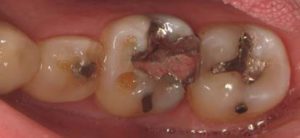
Figure 1: Typical preoperative condition with failing restorative amalgams (PM #191).
It was 1983 when LensCrafters® first opened, bringing a clinician (optometrist) and a laboratory (lens grinding) together under one roof to offer control of the entire procedure and offering patient convenience like never before.1 In the 1980s, three dental pioneers (Duret, Moermann and Andersson2) began work on a similar concept in dental care utilizing digital data for computer-assisted design with computer-assisted manufacturing (CAD/CAM).
Even though it’s been more than 25 years since the introduction of a chairside restorative system, only around 10 percent of dental practices in North America have this technology.3 Why? Most of us have heard the stories where occlusion had to be created by hand. Or cases show up in our offices and attribute less-than-ideal restoration to the evils of CAD/CAM dentistry, somehow forgetting that those restorations weren’t placed by the CAD/CAM systems, but merely fabricated by them.
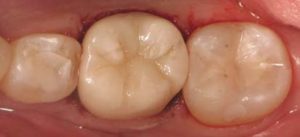
Figure 2: Combination case maximizing conservation and effective utilization of technology with same-day IPS e.max restorations and direct composite restorations (PM #195). Direct restorations completed while ceramic was milling, thus maximizing production.
It seems those experiences and stories create prejudices against any possible improvement in the technology and its resulting possibilities. So, it’s nice to see the clinical successes of CAD/CAM documented and discussed in a wide variety of online forums, as well as clinical documentation of the quality and efficiency of the entire system.4 Chairside CAD/CAM dentistry will open your eyes to all the possibilities that modern dentistry has to offer. Best of all, the return on investment provides you an even greater financial opportunity to access additional technological opportunities (e.g., lasers, diagnostics, digital communication and record keeping).
I just celebrated the 10th anniversary of my own private practice utilizing technology in which I provide state-of-the-art dentistry in a friendly, safe and cost-effective environment in Grandville, Michigan, a suburb of Grand Rapids. I have always invested heavily in technology, incorporating intraoral cameras in 2002, hard- and soft-tissue lasers in 2004, digital radiographs and charting in 2008 and the E4D Dentist System in 2009.
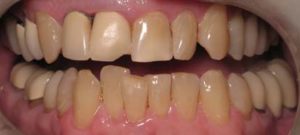
Figure 3: Patient presents with chipped and unesthetic anterior conventional restorations (DW #7–81)
I made the decision for chairside CAD/CAM dentistry after seeing the quality of restoration possible combined with the ease of use of the software, powder-free scanning and unlimited online support via S.O.S (Support On Site). My patients immediately appreciate the fact that I offer them the latest technology, and that once it’s been implemented, it will provide a better solution. It is amazing that once you incorporate chairside CAD/CAM dentistry into your routine care, patients also appreciate and see the difference. In my experience, when they do have that opportunity, they are engaged in the process. What’s more, the presence of CAD/CAM technology in the dental office gives patients a different perspective about the practice…one that says, “Wow, they’re on top of it and they’re willing to bring in new technology to better my care.” And, chairside CAD/CAM does enable better care in terms of solutions that are more responsive to patient needs, whether for more convenient treatments, treatments that are clinically proven and durable, and/or restorations that are metal-free and esthetic. CAD/CAM enables treatments with a porcelain restoration in one visit, one that is durable and also more conservative than a conventional metal-based crown. This represents a significant benefit for patients, in addition to eliminating the need for them to return for a second appointment.
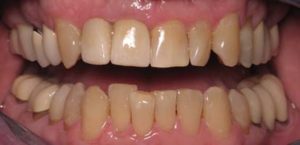
Figure 4: With chairside CAD/CAM dentistry, simply “cloning” a composite mock-up over the fracture, providing IPS e.max restorations in one appointment, all-ceramic restorations on #7 and #8 (DW #7–82).
Figures 1–6 demonstrate results obtained with my chairside CAD/CAM system – all in a single appointment.
But the CAD/CAM “wow” factor encompasses more than patients. It extends to and radiates from the dental team. Dental team members love in-office CAD/CAM because it reinforces their place on the leading edge of care and as part of the restorative solution. They take ownership of the fact they work for someone who invests in technology and can provide services and treatments that other practices don’t.
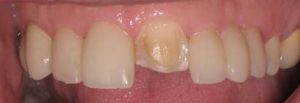
Figure 5: Patient presents with an emergency esthetic dilemma, fractured all-ceramic restoration (TK #91).
For the dentist, it provides a complete sense of professional satisfaction. For me, the tooth repair aspect of dentistry sometimes isn’t fun, but custom designing a restoration, feeling it in your hand once it’s milled, and characterizing it with stain and glaze to make it look its most natural — that’s fun, that’s rewarding and that’s a professional “wow” factor. Take a new look with 20/20 vision (not hindsight) at what options are available with chairside CAD/CAM dentistry and see the difference it can make in your own practice.
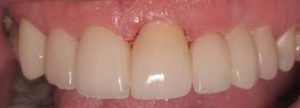
Figure 6: Offering an immediate solution rather than a temporary fix through chairside CAD/CAM dentistry (TK #92).
About the author: After completing his undergraduate studies at Michigan State University, Klein attended The Ohio State University College of Dentistry, earning his doctorate of dental surgery degree in 1997. Following dental school, Klein completed a one-year residency in advanced general dentistry in Columbus, Ohio, before coming home to West Michigan where he has been providing dental care since 1998. Klein is an active member of numerous dental societies, including the American Dental Association, Michigan Dental Association, Academy of General Dentistry and Academy of Laser Dentistry. He is a past-president of the West Michigan District Dental Society and Kent County Dental Society.
www.grandvillelaserdentistry.com
Tel. : (616) 538-4960
References
- www.luxottica.com, Lenscrafters history
- Miyazaki T, Hotta Y, Kunii J, Kuriyama S, Tamaki Y (January 2009). “A review of dental CAD/CAM: current status and future perspectives from 20 years of experience.” Dent Mater J 28 (1):44–56. PMID 19280967.
- CAD/CAM can do. April 2008, Dental Products Report.
- Marginal Microscopic Analysis of CAD/CAM All-Ceramic Crown.
